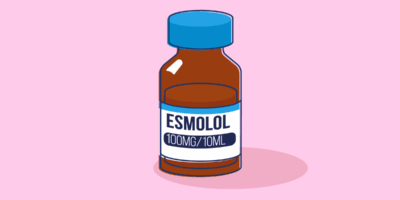Epilepsy Drug Market size was valued at $7 billion in 2022, and is projected to reach $9.8 billion by 2032, growing at a CAGR of 3.5% from 2023 to 2032.
The Epilepsy Drug Market is a critical segment of the pharmaceutical industry, focused on the development, production, and distribution of medications used to treat epilepsy, a neurological disorder characterized by recurrent, unprovoked seizures. Epilepsy affects millions of people worldwide, making effective treatment essential for improving quality of life and reducing seizure frequency.
Market Overview
Epilepsy drugs, also known as antiepileptic drugs (AEDs), are the primary treatment for managing seizures in patients. These medications work by stabilizing the electrical activity in the brain, reducing the likelihood of seizures. The market includes a wide range of drugs, from first-generation AEDs like phenytoin and carbamazepine to newer drugs like levetiracetam, lamotrigine, and lacosamide.
Key Market Drivers
- Growing Prevalence of Epilepsy:
- Epilepsy affects around 50 million people globally, according to the World Health Organization (WHO). The growing prevalence, particularly in aging populations and low- and middle-income countries, is driving demand for antiepileptic medications.
- Introduction of Novel AEDs:
- Recent years have seen the development and approval of novel AEDs that offer better efficacy, fewer side effects, and improved safety profiles compared to traditional drugs. These newer drugs, such as eslicarbazepine and brivaracetam, are expected to drive market growth.
- Rising Awareness and Diagnosis:
- Increased awareness of epilepsy, along with improvements in diagnostic techniques, has led to earlier diagnosis and treatment initiation, further driving the demand for epilepsy drugs.
- Improved Access to Healthcare:
- Expanding healthcare infrastructure in developing regions, particularly in Asia-Pacific, Latin America, and Africa, is improving access to epilepsy treatments, contributing to market expansion.
- Research and Development (R&D) in Epilepsy Therapies:
- Ongoing R&D efforts to develop new antiepileptic drugs with enhanced efficacy, better patient compliance, and minimal side effects are accelerating market growth. Innovations such as extended-release formulations and adjunctive therapies are gaining traction.
Market Segmentation
The epilepsy drug market can be segmented by drug class, seizure type, distribution channel, and region.
- By Drug Class:
- First-Generation AEDs: Includes traditional medications like phenytoin, carbamazepine, and valproic acid, which have been used for decades but come with more side effects.
- Second-Generation AEDs: Includes newer drugs like lamotrigine, levetiracetam, topiramate, and zonisamide, which are more effective and have better side effect profiles.
- Third-Generation AEDs: The newest class of drugs, including lacosamide, brivaracetam, and eslicarbazepine, which focus on reducing side effects while maintaining seizure control.
- Adjunctive Therapies: Medications used in combination with standard AEDs to improve seizure control, particularly in refractory epilepsy.
- By Seizure Type:
- Partial (Focal) Seizures: Seizures that begin in a specific area of the brain. AEDs like carbamazepine and lamotrigine are commonly used for these types of seizures.
- Generalized Seizures: Seizures that affect both sides of the brain, including tonic-clonic and absence seizures. Valproic acid and levetiracetam are often prescribed.
- Unclassified Seizures: Seizures that do not fit into the other categories, requiring personalized treatment strategies.
- By Distribution Channel:
- Hospital Pharmacies: A significant portion of epilepsy drugs is dispensed through hospital pharmacies, especially for acute care and severe epilepsy cases.
- Retail Pharmacies: Widely used for the distribution of chronic epilepsy medications for outpatient care.
- Online Pharmacies: Growing in popularity due to convenience and increased access to medications, particularly in developed countries.
- By Region:
- North America: The largest market, driven by advanced healthcare systems, high diagnosis rates, and extensive use of novel AEDs.
- Europe: A significant market, with robust healthcare infrastructure and widespread adoption of second- and third-generation AEDs.
- Asia-Pacific: A rapidly growing market due to increasing epilepsy awareness, healthcare improvements, and rising incidence rates.
- Latin America, Middle East & Africa: These regions are experiencing steady growth, primarily due to improved healthcare access and government initiatives to provide epilepsy treatment.
Market Trends
- Personalized Medicine in Epilepsy:
- The trend towards personalized medicine is impacting the epilepsy drug market, with increasing focus on tailoring treatments to an individual’s genetic makeup, seizure type, and response to medication. Pharmacogenomics is playing a key role in optimizing drug efficacy and minimizing adverse effects.
- Extended-Release and Combination Therapies:
- There is growing demand for extended-release formulations of AEDs, which offer better patient compliance by reducing the frequency of doses. Additionally, combination therapies that use multiple drugs to target different seizure mechanisms are gaining popularity, especially for drug-resistant epilepsy.
- AI and Machine Learning in Drug Development:
- AI and machine learning are being utilized to accelerate drug discovery and development in the epilepsy space. These technologies help identify potential drug candidates faster and predict patient responses to different medications.
- Focus on Pediatric and Geriatric Epilepsy:
- Epilepsy affects a broad spectrum of patients, with specific challenges in pediatric and geriatric populations. Drug formulations and dosing strategies are increasingly being adapted to these groups, with more research focused on pediatric-friendly formulations and treatment strategies for older adults.
- Non-Pharmacological Therapies:
- Although AEDs remain the cornerstone of epilepsy treatment, there is increasing interest in non-pharmacological therapies such as vagus nerve stimulation (VNS), responsive neurostimulation (RNS), and ketogenic diets, often used in conjunction with drug therapies for better seizure control.
Challenges
- Side Effects and Drug Resistance:
- Despite the availability of numerous AEDs, many patients experience significant side effects, such as dizziness, fatigue, and cognitive impairment. Additionally, about 30% of epilepsy patients have drug-resistant or refractory epilepsy, where seizures cannot be controlled by standard medications.
- High Cost of Novel Therapies:
- The cost of newer AEDs can be prohibitive, particularly in low-income regions. This limits access to the most effective treatments for many patients.
- Limited Awareness and Stigma:
- In many parts of the world, epilepsy is still associated with social stigma, and awareness about treatment options remains low. This can lead to delayed diagnosis and inadequate treatment.
- Regulatory Hurdles:
- Stringent regulatory requirements and lengthy approval processes for new epilepsy drugs can slow down the introduction of innovative treatments in the market.
Future Outlook
The Epilepsy Drug Market is poised for continued growth, driven by ongoing research into new therapies, the introduction of personalized medicine, and the development of drugs targeting drug-resistant epilepsy. Advancements in genetic research and neuroimaging are likely to lead to more targeted treatments, while improvements in drug formulations will enhance patient compliance and quality of life.
In the future, the integration of AI and digital health technologies into epilepsy care may revolutionize the management of the disorder, offering real-time monitoring of seizures and personalized treatment plans. These innovations, along with the continued development of safer, more effective AEDs, are expected to drive significant market growth over the next decade.
Click Here, To Get Free Sample Report https://stringentdatalytics.com/sample-request/epilepsy-drug-market/15445/
Market Segmentations:
Global Epilepsy Drug Market: By Company
Pfizer
Eisai
Novartis
Sanofi
Union Chimique Belge
Abbott
GlaxoSmithKline
Sunovion Pharmaceuticals
Teva Pharmaceutical
Johnson & Johnson
Abbvie
Janssen Pharmaceuticals
Cephalon
Global Epilepsy Drug Market: By Type
First Generation Drugs
Second Generation Drugs
Third Generation Drugs
Global Epilepsy Drug Market: By Application
Hospital
Clinic
Others
Global Epilepsy Drug Market: Regional Analysis
The regional analysis of the global Epilepsy Drug market provides insights into the market’s performance across different regions of the world. The analysis is based on recent and future trends and includes market forecast for the prediction period. The countries covered in the regional analysis of the Epilepsy Drug market report are as follows:
North America: The North America region includes the U.S., Canada, and Mexico. The U.S. is the largest market for Cold-chain Pharma in this region, followed by Canada and Mexico. The market growth in this region is primarily driven by the presence of key market players and the increasing demand for the product.
Europe: The Europe region includes Germany, France, U.K., Russia, Italy, Spain, Turkey, Netherlands, Switzerland, Belgium, and Rest of Europe. Germany is the largest market for Cold-chain Pharma in this region, followed by the U.K. and France. The market growth in this region is driven by the increasing demand for the product in the automotive and aerospace sectors.
Asia-Pacific: The Asia-Pacific region includes Singapore, Malaysia, Australia, Thailand, Indonesia, Philippines, China, Japan, India, South Korea, and Rest of Asia-Pacific. China is the largest market for Cold-chain Pharma in this region, followed by Japan and India. The market growth in this region is driven by the increasing adoption of the product in various end-use industries, such as automotive, aerospace, and construction.
Middle East and Africa: The Middle East and Africa region includes Saudi Arabia, U.A.E, South Africa, Egypt, Israel, and Rest of Middle East and Africa. The market growth in this region is driven by the increasing demand for the product in the aerospace and defense sectors.
South America: The South America region includes Argentina, Brazil, and Rest of South America. Brazil is the largest market for Cold-chain Pharma in this region, followed by Argentina. The market growth in this region is primarily driven by the increasing demand for the product in the automotive sector.
Click Here, To Buy Premium Report https://stringentdatalytics.com/purchase/epilepsy-drug-market/15445/?license=single
Key Points:
- Define, describe and forecast The Global Market by type, application, end user and region.
- Provide enterprise external environment analysis and PEST analysis.
- Provide strategies for company to deal with the impact of COVID-19.
- Provide market dynamic analysis, including market driving factors, market development constraints.
- Provide market entry strategy analysis for new players or players who are ready to enter the market, including market segment definition, client analysis, distribution model, product messaging and positioning, and price strategy analysis.
- Keep up with international market trends and provide analysis of the impact of the COVID-19 epidemic on major regions of the world.
- Analyze the market opportunities of stakeholders and provide market leaders with details of the competitive landscape.
About Stringent Datalytics
Stringent Datalytics offers both custom and syndicated market research reports. Custom market research reports are tailored to a specific client’s needs and requirements. These reports provide unique insights into a particular industry or market segment and can help businesses make informed decisions about their strategies and operations.
Syndicated market research reports, on the other hand, are pre-existing reports that are available for purchase by multiple clients. These reports are often produced on a regular basis, such as annually or quarterly, and cover a broad range of industries and market segments. Syndicated reports provide clients with insights into industry trends, market sizes, and competitive landscapes. By offering both custom and syndicated reports, Stringent Datalytics can provide clients with a range of market research solutions that can be customized to their specific needs.
Contact Us
Stringent Datalytics
Contact No- +1 346 666 6655
Email Id- sales@stringentdatalytics.com




Leave a Reply